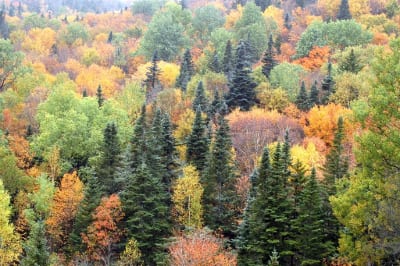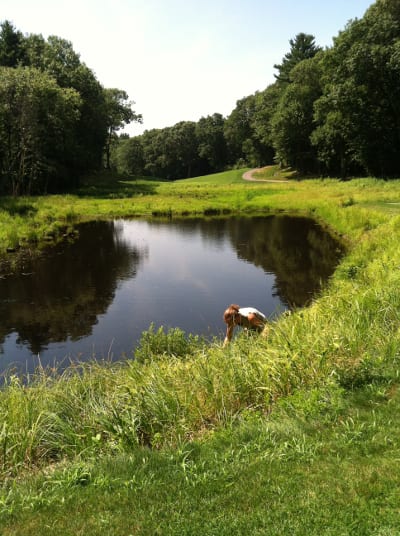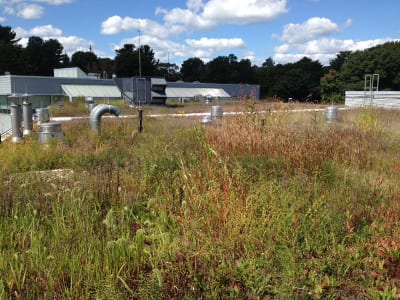by Miles H. Connors
According to Webster’s Dictionary, restoration is ‘the process of returning something to its original condition by repairing it, or bringing back something that existed before.’ Considering restoration in the greater context of ecology, one could define ecological restoration as reinstating degraded natural communities to their fundamental or original function.
How do we reinstate these natural communities? If we choose to utilize plants as our tool for restoration, will it be enough to simply remove invasive species from the environment and plant an array of native species that may satisfy the aesthetic palette? I would suggest that in addition to aesthetic preferences, we need a deeper and more systematic approach to rebuilding plant communities in order to completely restore degraded land and promote the long-term sustainability of that land.
In developing that systemic approach, I look to the advice of Aldo Leopold, author of A Sand County Almanac, who proposes that in order to determine the overall health of an ecosystem, you must have reference points in the landscape, in other words, patches of ecosystems still functioning as they had before disruption. Leopold states, “The first step is to reconstruct a sample of what we had to begin with.” (Leopold 1966)
Natural and Human Disturbances
New England is a mosaic of diverse plant communities that are always in motion. Plant communities are not static, but always in a form of succession brought about by natural and human influences. The landscape of today has disturbance histories of the past that are altering the way we will view and experience them tomorrow.
Natural disturbances like fire, flooding, or wind can drastically alter the plant community’s composition. Human disturbances through the introduction of invasive plant species, pests, and diseases; the abandonment of agricultural land and resultant biodiversity loss; and the spread of huge urban areas also shape the larger landscape.
Classify Natural Plant Communities
From the complexity of disturbances that keep our plant communities continuously evolving, we can find patterns. Combinations of plants found in natural communities repeat wherever certain environmental conditions (soil, water, and climate) are found. Consequently, plants play a dominant role in classification of natural communities, as they are reliable indicators of specific environmental conditions. Although no two communities are alike, the species composition, vegetation structure, and environmental conditions in which they exist repeat with enough similarity that specific natural communities can be classified.

Natural Heritage and Endangered Species Program has cataloged natural communities such as this Spruce Fir Northern Hardwoods Forest.
Natural Heritage and Endangered Species Program, (NHESP) Massachusetts Division of Fisheries & Wildlife has a list of classified plant community types on their website for reference and identification purposes (Swain and Kearsley, 2011). These plant communities can be utilized in building a more complete plant palette for native restoration design and implementation.
Green Roof Restoration
Recently, I was asked to plant additional natives on a green roof in Lexington, MA. The green roof was originally installed as part of a LEED Silver building project completed in 2005 and minimal maintenance had been undertaken since its completion by the time I began the collaboration. My first step was to conduct a thorough plant inventory, during which my team and I discovered that many of the original plantings of sedums and blue fescues were still present. Seeded into the dry, rocky substrate of the green roof were little blue stem grass, Schizachyrium scoparium, goldenrods, Solidago, milk weeds, Asclepias spp., and eastern red cedar, Juniperus virginiana, mixed with invasive Oriental bittersweet, Japanese knotweed, and multiflora rose. After conducting the inventory, the next step included the compilation of the additional native plant species for proposal to the client.
By reviewing the NHESP, I found that the LEED green roof in Lexington had the initial stages of a Cultural Grassland. According to the NHESP, a Cultural Grassland is usually dominated by dry, low nutrient soils, and plants that dominate this community include little blue stem grass, Schizachyrium scoparium, Pennsylvania sedge, Carex pensylvanica, poverty grass, Danthonia spicata, and other non-native species. Some cultural grasslands also have herbaceous species, such as goldenrods Solidago, Euthamia, and Asclepias. Given this information, my proposal suggested that the selected plant material should be able to effectively filter storm water run-off, serve the function of cooling the building, be constructed as cultural grassland, and perhaps provide habitat value to nesting grassland birds.
7th Hole Grass Restoration
As part of an ongoing maintenance project at a golf course in Weston, MA, I assist the superintendent with invasive plant management and native restoration in non-turf areas throughout the course landscape. Much of the course is surrounded by wetland habitat and the water that flows through the course eventually makes its way to a larger water supply in Cambridge. At the 7th Hole fairway, the client has requested that we remove invasive woody material and plant native grasses that will be aesthetically pleasing. Additional landscape goals include filtering storm water and providing habitat for wildlife.

Looking across the pond and fairway, the golf course mows the wet meadow annually to keep out woody invasive plants.
After conducting a plant inventory in the fairway, I referred to NHESP’s complete listing of natural communities to see if there were any similarities between an identified natural community and my plant inventory. I found that the low meadow along the pond, rich with mineral soils had the structure and vegetation to be classified as a Wet Meadow. Most notable during our review of the project area, we identified upright sedge, Carex stricta, planted rushes, and Joe Pye Weed, Eupatorium maculatum, plants consistent with a wetland meadow habitat. Educated with this information, I proposed additional massing of Carex stricta, wool-grass Scirpus cyperinus, slender woolly-fruited sedge, and stalked wool-grass Scirpus pedicellatus, species of plants that were missing from the palette of the NHESP Wet Meadow list. With the addition of these plants, I am closer to building a complete natural community.
By better understanding the existing plant species in the landscape and checking reference points provided by NHESP that assist in determining natural community types, I can begin to reconstruct a late succession plant community. If left to natural processes, over time these early succession areas may become a Cultured Grassland, or Wet Meadow. However, equipped with access to NHESP’s reference material I can seek, although I may not exactly duplicate, a mature and effectively functioning natural community as the beneficial goal for any ecological restoration project.
References
- Leopold, Aldo. A Sandy County Almanac. Oxford University Press: 1966.
- Swain, P.C. and Kearsley, J.B., (2011). Classification of the Natural Communities of Massachusetts, Version 1.4, Natural Heritage & Endangered Species Program, Massachusetts Division of Fisheries and Wildlife: Westborough, MA.
- Website: www.mass.gov/eea/agencies/dfg/dfw/natural-heritage/natural-communities/classification-of-natural-communities.html#
About the Author
Miles H. Connors is Manager of Ecological Services at Parterre Ecological, a division of Parterre Garden Services. He holds an undergraduate degree in Environmental Planning and Policy and Biology, with a Masters in Sustainable Landscape Planning and Design. Miles is also a Massachusetts Certified Horticulturalist and a Licensed Pesticide Applicator. Parterre Ecological provides invasive plant management, native plant restoration, maintenance, and monitoring. The company’s mission is to restore degraded plant communities to emulate, although not necessarily duplicate, habitat types that prevailed before disruption of natural processes occurred. Miles may be reached at mconnors@parterregarden.com.


